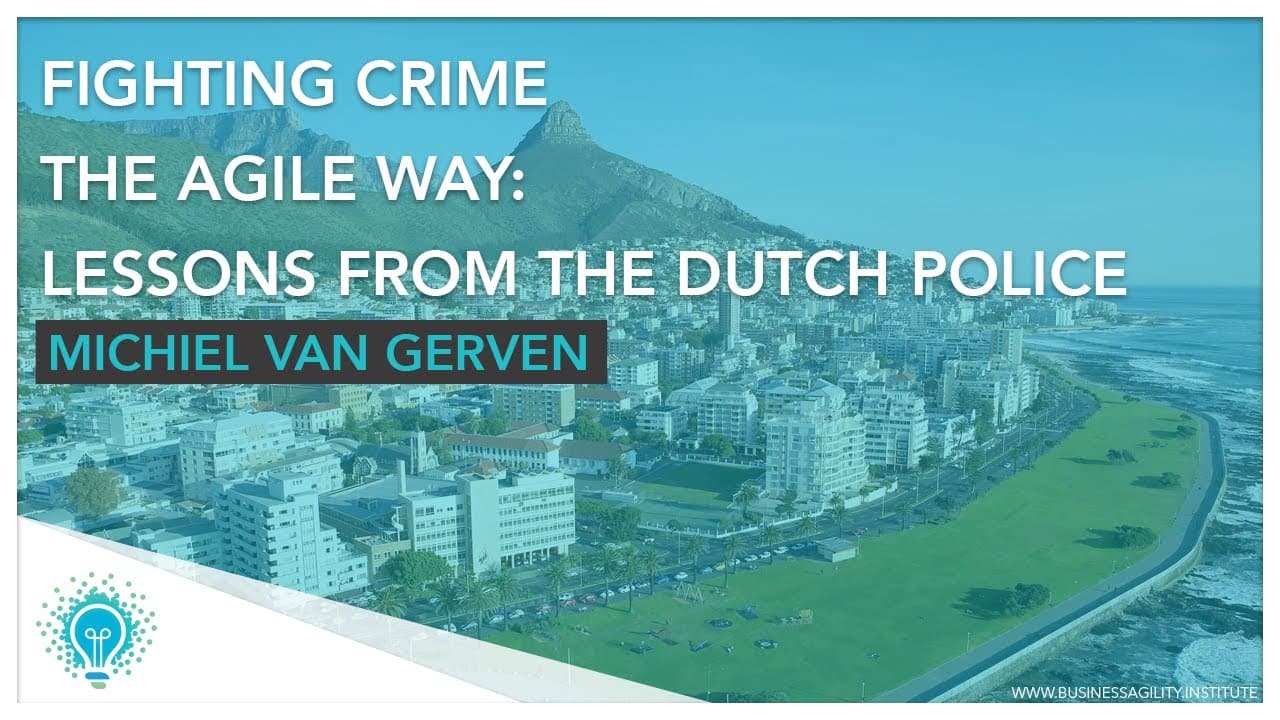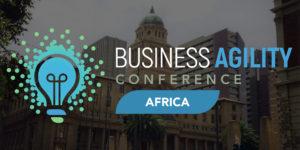Thank you so much for those very kind words. It says on the box that I’m an Agile Coach, but I like to think of myself as a social technologist. Before we dive in, let me briefly explain what I mean by social technology. To me, social technology is a set of principles that are universally applicable, much like Lean, Taylorism, or Agile itself.
What does this mean, and why is it important? The point is that there is something beyond Agile. I know most of you are involved in Agile transformations—it's my business too—but if something new comes along that is better suited to a particular time or situation, I would implore you not to cling to Agile. I might get booed off stage for this, but I encourage you to explore what works best for you.
What I hope to share today are some lessons I’ve learned over the past two years working with the Dutch Police as a trainer, consultant, and team coach. These lessons apply far beyond law enforcement, and I’ve also learned valuable insights about myself along the way.
Why Is the Police in an Agile Transformation?
First, why is the police even in an Agile transformation? This is no longer the face of organized crime. Not just because he died in the third movie—but what do you associate with this man? Mafioso? Intimidation? Structure? Yes, exactly. A hierarchical organization with a single man at the top, wearing a tuxedo.
Unfortunately, that’s not how modern criminal organizations operate anymore. Instead, they resemble something like the proverbial Yellow Pages. Research in the Netherlands describes modern criminal organizations as networked groups of highly localized, specialized professionals who simply contact each other when they need to get a job done.
This is, in many ways, a result of our own doing. The Americans call it the "Kingpin Strategy"—we’ve become highly effective at eliminating leaders of criminal organizations. But the unintended consequence? We now face decentralized networks that are much harder to dismantle.
The Changing Nature of Crime
Who here has recently used the Yellow Pages? Right—none of us. Criminal enterprises are undergoing a technological shift. Criminals, as enterprising as they are, are early adopters of new technology. This means that law enforcement must constantly play catch-up.
Now, imagine what this does to the people working in the police. Not only are they dealing with an organization that is harder to tackle, but they must also develop new skills. Cracking phones, for example, was once a specialized role, but today, even basic criminal investigators need to know how to do it.
To quote General McChrystal, "It takes a network to beat a network." If law enforcement is to effectively combat modern criminal networks, they must become networks themselves. This is why the Dutch Police is undergoing an Agile transformation.
What Does It Take?
We've talked a lot about leadership over the past two days, but I want to show you something instead of just telling you. Bear with me as we watch this short video.
Leadership and the Wolf Effect
The video describes one of the most fascinating ecological findings of the past half-century—trophic cascades. It explains how the reintroduction of wolves to Yellowstone National Park in 1995 led to a dramatic transformation of the ecosystem.
Before the wolves returned, deer populations had exploded, grazing the land down to almost nothing. But when the wolves arrived, they didn’t just kill deer—they changed their behavior. Deer started avoiding valleys and gorges where they were most vulnerable, allowing vegetation to regrow. This led to a cascade of positive effects—songbird populations increased, beavers returned, fish thrived, and even the rivers changed course due to the stabilizing effect of regenerated forests.
Why does this matter? Because for years, I’ve held this up as an example of how small changes can have massive results. But I was wrong.
Consider this: What if, instead of wolves, we had reintroduced squirrels? Would anything have changed? No.
The point is, not all small changes are equal. The wolves weren’t the ones who directly changed the ecosystem—it was the behavior of the deer. But the catalyst for this behavioral shift was the presence of apex predators.
Agile Transformation Requires Apex Predators
True Agile transformation requires apex predators. So, by a show of hands—are there any apex predators in the room? Who’s happy to admit it?
An Agile apex predator is not the same as a corporate dinosaur. Dinosaurs are large, powerful, and impressive—but they are extinct. Many organizations still have their dinosaurs, but real leadership requires something different.
What Makes an Agile Leader?
Pascal Vroling, a leader in the Dutch Police’s Agile transformation, taught me a lot about leadership in Agile organizations. Here’s what it takes:
- Serious Commitment: Agile transformation is an eight-year journey. You must be in it for the long haul and focus on the infinite game.
- Human Connection: Leaders must be human. Pascal shares his personal stories, including times he faced mortal danger on the streets. This makes him approachable.
- Vulnerability: Early in his Agile experiment, Pascal nearly pulled the plug. Instead, he turned to his team and admitted he didn’t know the best way forward. His team spoke up, and they kept going.
- Lead by Example: You can’t expect teams to work in an Agile way if you don’t walk the talk.
- Decisiveness: Agile may seem warm and collaborative, but true transformation requires hard decisions. Leaders must set clear visions and be upfront about the consequences of not aligning with them.
- Connectivity: Leaders must foster networks. In Pascal’s case, the most important innovation he introduced was a coffee table—a simple space where teams and even the mayor regularly connect.
The Dutch Police Agile Transformation
Unlike typical corporate transformations, the Dutch Police is not undergoing a single Agile transformation. Instead, it is running multiple, parallel experiments. This approach has several advantages:
- It allows adaptation to local needs—20 to 30 teams doing the same job work in slightly different ways, and that’s okay.
- It ensures pull-based transformation—people volunteer rather than being forced.
- It accommodates different transformation speeds.
- It scales out rather than up, reducing complexity.
Lessons Learned
There is no single Agile blueprint. Every transformation must be tailored to its context. Here’s an example: A police investigation unit had 45 people working in rotating shifts. They needed a framework to distribute cases and share information. What Agile framework should they use?
Answer: I didn’t know. Instead, I worked with them to find a solution together. Agile consultants must be comfortable with unknowns and let teams co-create their own solutions.
The Ecosystem of Ecosystems
Leadership is key. Agile transformations must be designed as a series of experiments. Frameworks are just starting points. But the police don’t operate in a vacuum—criminal justice is an ecosystem. Even if the police optimize, a criminal case can take years to reach prosecution. The entire system must change.
Final Thoughts
The Agile Police Manifesto reflects the behaviors we want to see in law enforcement. But Agile is not just about methods—it’s about value. So, I ask you: What do you value most?
For me, this is my son. He’s two years old. His biggest worry is whether he gets to wear his tiger suit. He also loves police cars—maybe I had something to do with that.
If this is what matters most to me, then what should I be working on? As Agile professionals, are we delivering the most valuable work? Because quite frankly, we need help. Your local police need your help. So, go out there, and maybe—just maybe—you’ll earn one of these Agile Police pioneer t-shirts.



 The Dutch Police is at a crossroads. Like most organizations, the Dutch National Police is well equipped to fight yesterday's issues. Today’s challenges require a police force that is tech-savvy, able to deal with increasingly complex crimes, and is very quick to respond to new developments. Criminal organizations are no longer the classic highly structured organizations of old, they have become true network organizations. A recent report has described them as a loose association of specialists: pick the number you require from the proverbial criminal yellow pages, and you are on your way.
The Dutch Police is at a crossroads. Like most organizations, the Dutch National Police is well equipped to fight yesterday's issues. Today’s challenges require a police force that is tech-savvy, able to deal with increasingly complex crimes, and is very quick to respond to new developments. Criminal organizations are no longer the classic highly structured organizations of old, they have become true network organizations. A recent report has described them as a loose association of specialists: pick the number you require from the proverbial criminal yellow pages, and you are on your way.